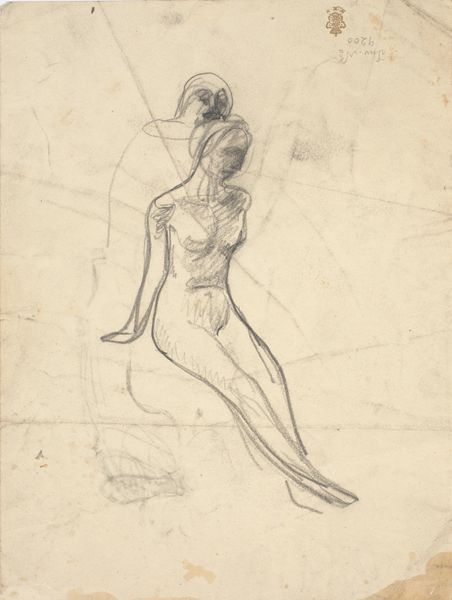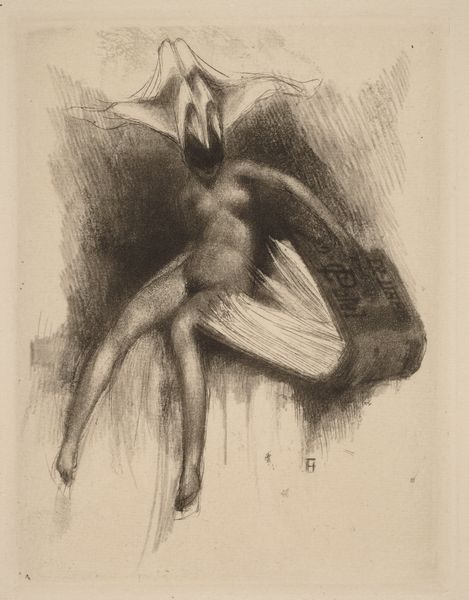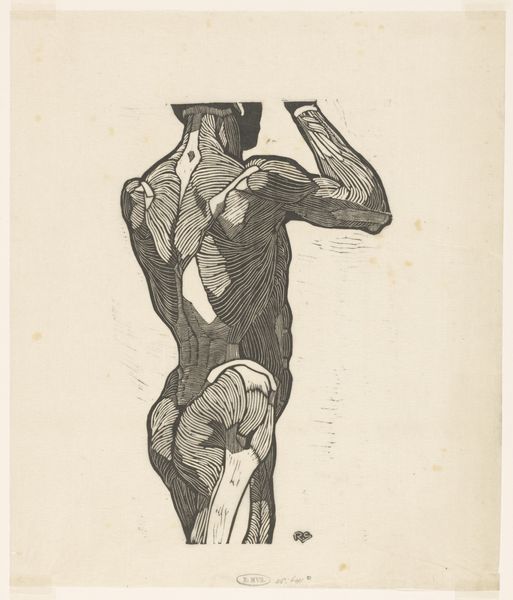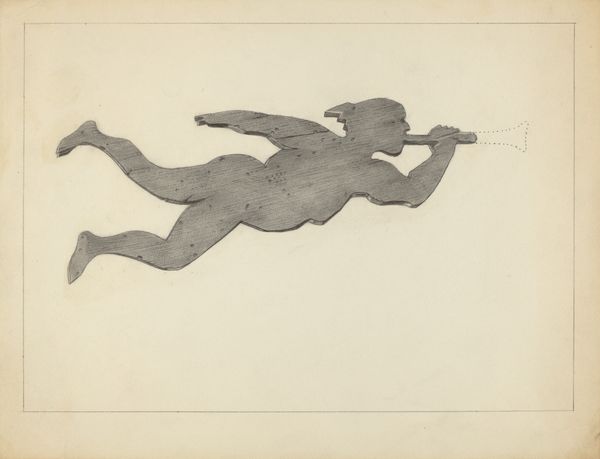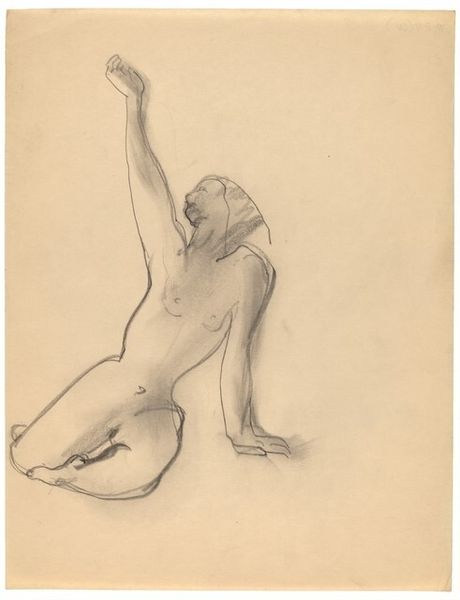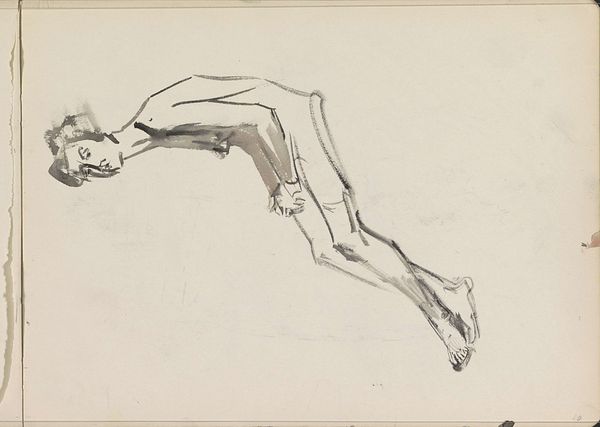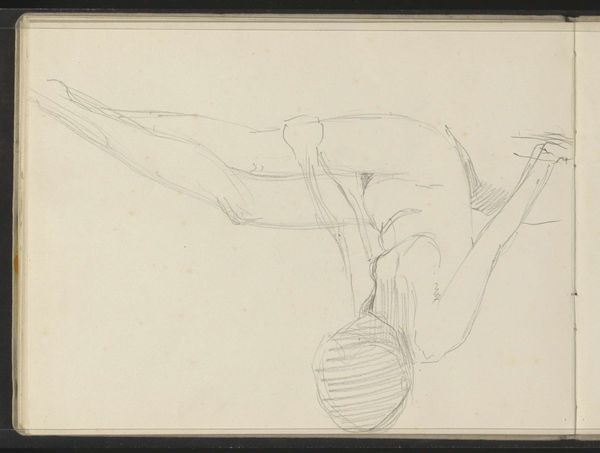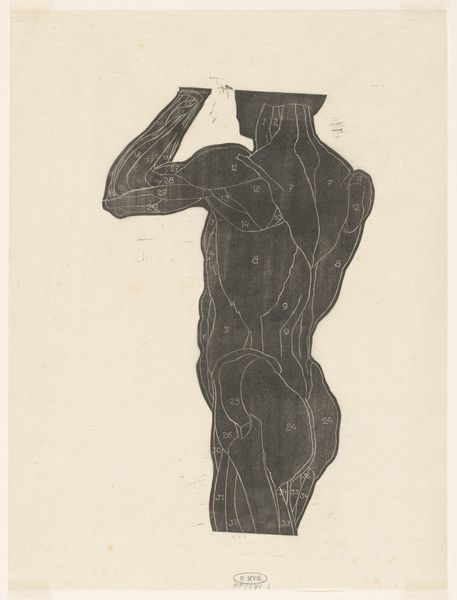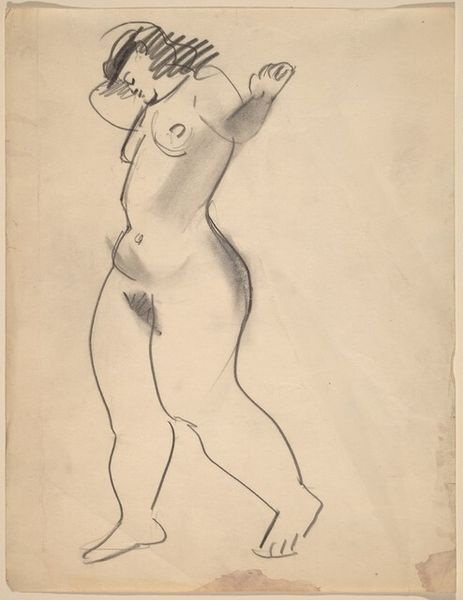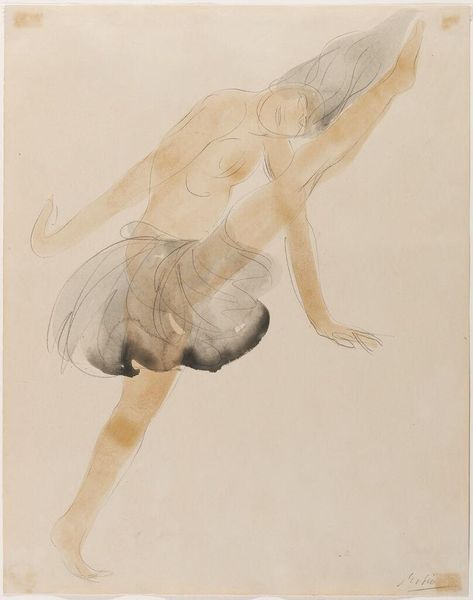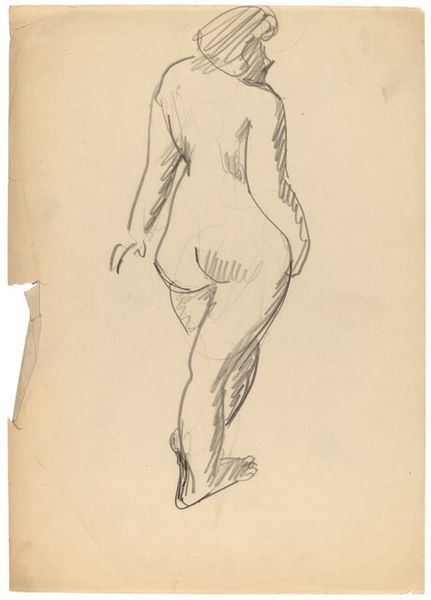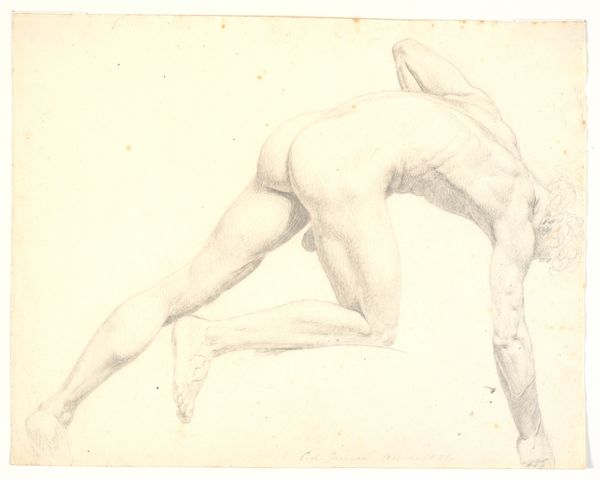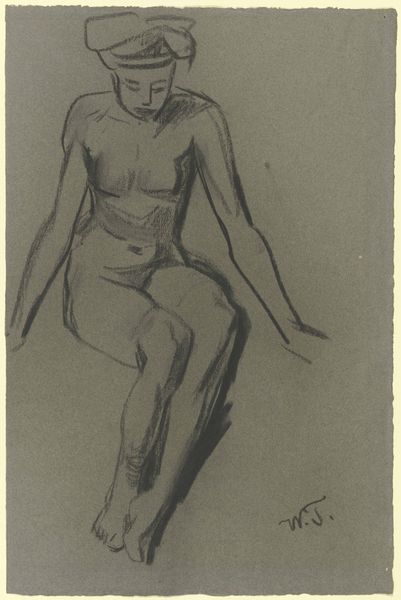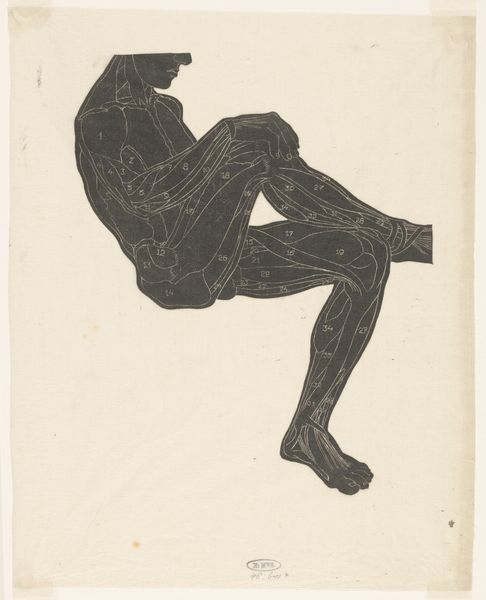
drawing, pencil, graphite
#
drawing
#
figuration
#
pencil drawing
#
pencil
#
expressionism
#
graphite
#
portrait drawing
#
nude
Dimensions: image: 48 x 54.2 cm (18 7/8 x 21 5/16 in.)
Copyright: National Gallery of Art: CC0 1.0
Editor: So, this is František Drtikol’s "Kneeling Nude," a pencil and graphite drawing from 1927. It's strikingly simple, but the elongated body and reaching pose give it a sort of melancholic, desperate feel. What do you see in this work, looking at it from your perspective? Curator: For me, it's impossible to ignore the historical and cultural context of the work. 1927 was a time of significant shifts in thinking about the body, particularly the female form, but Drtikol was somewhat separate from the broader canon. Given the era’s fixation on industrial progress, can you tell how this figure departs from those norms? Editor: Yes, it's like the opposite of the sleek, mechanized figures of Art Deco. There is very little “machine” about this body. Curator: Exactly! Drtikol moves us in a different direction entirely. We are confronted with vulnerability and a questioning of ideals of feminine beauty as expressed in modernist art. Editor: The raised hand, almost beseeching, definitely emphasizes that vulnerability. But the firm lines of the graphite create a sense of… defiance, maybe? Or determination. Curator: I see that tension as well. It speaks to the contradictions inherent in representing the female nude during this time – the push and pull between objectification and agency. The woman in the image has her gaze raised, as if she is addressing some unknown future. The raised arm speaks to potential for action. Considering that art in interwar Europe challenged convention and sexual mores, where do you think this particular piece might fit? Editor: Perhaps it's less a celebration of idealized form and more of an assertion of inner strength, a complex exploration of what it meant to inhabit a female body during that period? Thanks, it certainly changed my initial view on this artwork. Curator: Exactly. Engaging with art through its historical circumstances and visual components creates avenues for critical analysis and reinterpretation, something we can all use.
Comments
No comments
Be the first to comment and join the conversation on the ultimate creative platform.
